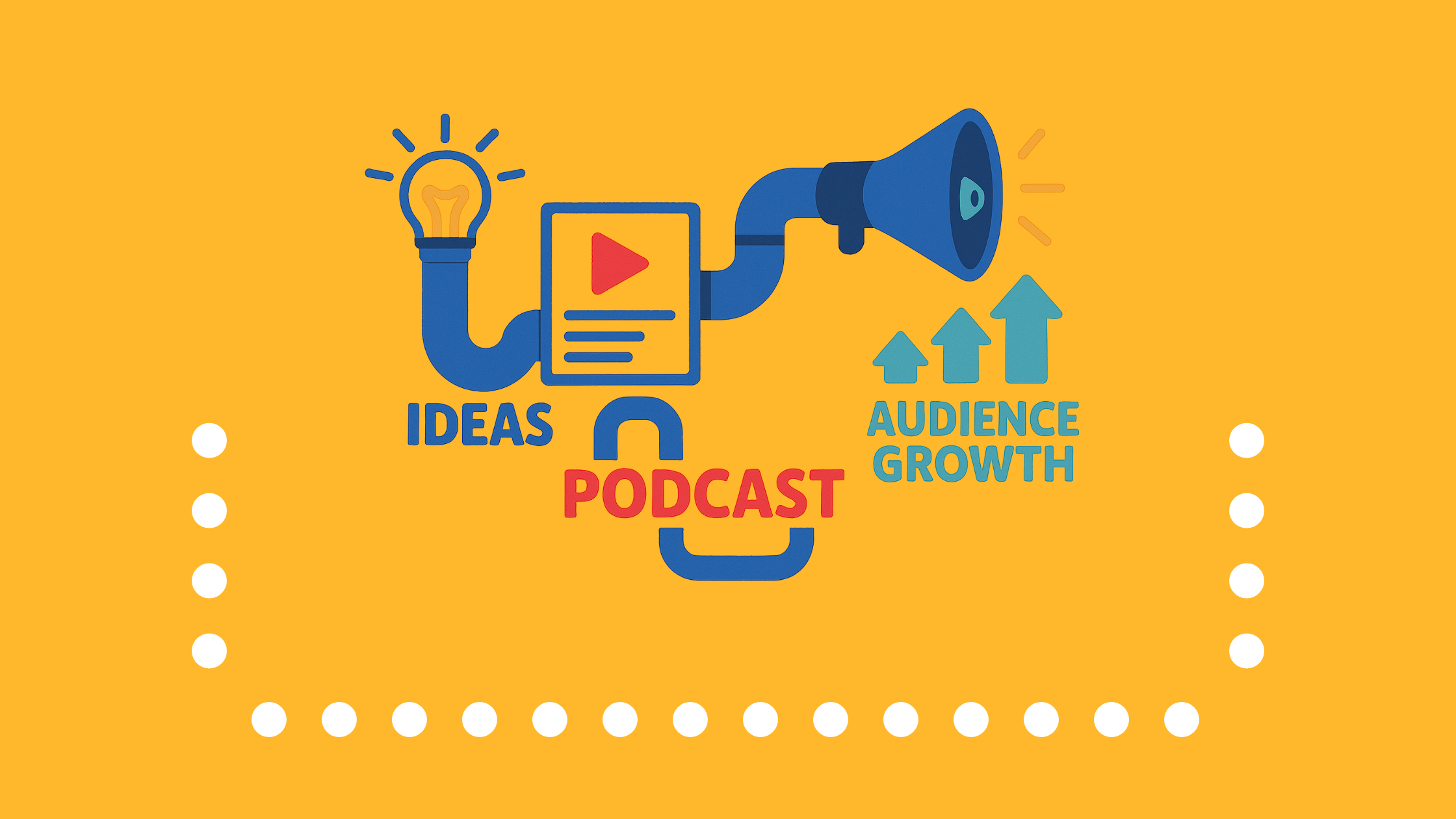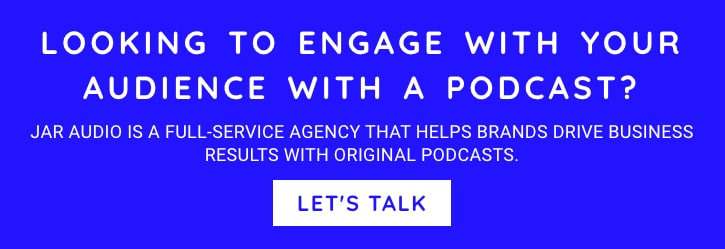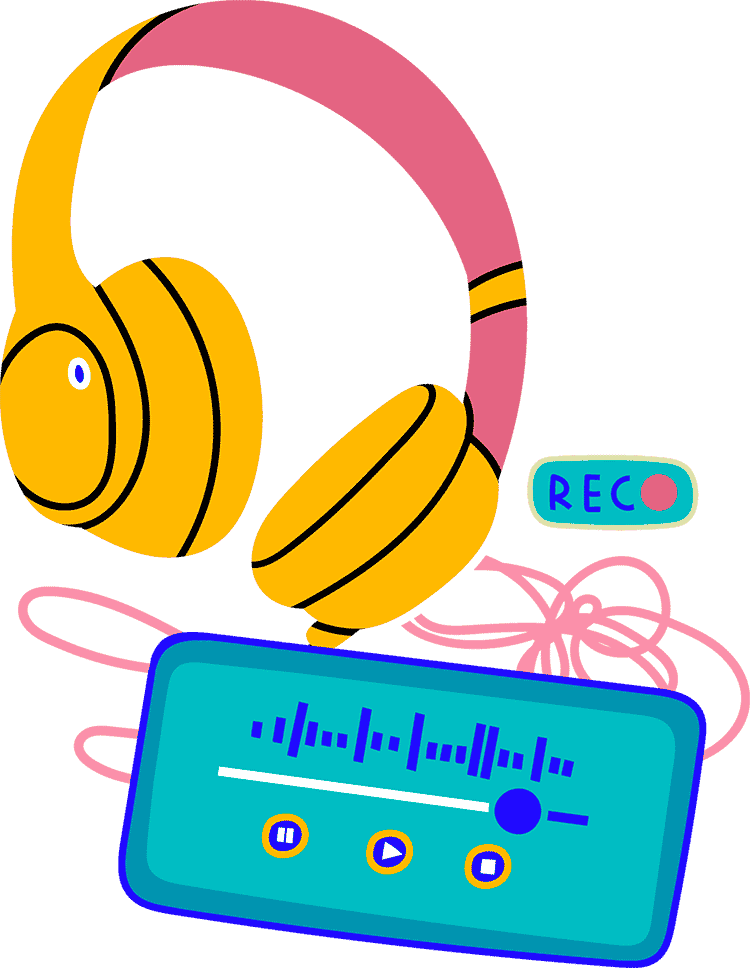Branded podcasts are not just another content format — they are a strategic bridge that, when done right, connects brands and audiences with trust, depth, and long-term value.
That’s all well and good. But let’s be honest: most audiences approach branded podcast concepts with skepticism.
They’ve heard too many shows that feel like thinly veiled ads or corporate chest-thumping. They’re wary of content that pretends to serve them but ultimately serves only the brand.
At JAR Audio, we believe overcoming that skepticism starts with how you shape the concept itself — before you draft a proposal, before you write a creative brief, and long before you hit record.
We help brands like Amazon Small Business Accelerator, RQI Partners, and Kelty Youth Mental Health build podcast content strategies that don’t just pass internal approval by addressing key talking points from the marketing brief — they actually connect with audiences in authentic, meaningful ways. Shocking, right? Here’s how we guide brands through that process.
Understanding the proposal vs the creative brief
The proposal phase is where we initially explore possibilities and highlight opportunities:
- What kind of show could help meet the brand’s goals and serve its audience?
- What opportunity exists in the market, and how can the brand fill it?
- How can we frame a concept that’s both creatively exciting and strategically aligned?
As part of this phase, we also conduct a competitive analysis — looking at what similar brands are doing in the podcast space, identifying emerging trends, and most importantly, spotting the open space where the brand can do something truly unique or genre-defining.
The creative brief or podcast content strategy comes later — once the big questions are answered and alignment is reached. That’s when we define the specific creative approach, audience focus, and success metrics for the podcast season.
But before either document gets written, you have to do the deep thinking. There is no shortcut for this. AI can help you spitball ideas – but it in no way makes up for nuanced human understanding of the brand, the zeitgeist, and the target audience.
Step 1: Get curious about the brand
Before shaping any creative, you need to understand:
- Where are the no-go zones? What topics, tones, or claims are off-limits?
- What does the brand stand for, both internally and externally?
- What is the brand voice, or culture, and where does it feel most authentic and alive?
- What are the blind spots the brand may have in terms of how it is perceived in the wider world? For insa
For RQI Partners (a leader in resuscitation programs), we knew their audience — nurse educators — demanded humility, accuracy, and real value.
Nurses can see through bull*hit sales pitches better than anyone else on the planet. Anything that felt like marketing gloss would lose their trust. Once we convinced the client of this – a whole world of interesting, practical, “on the ground” storytelling opened up.
For Kelty Youth Mental Health Resource Center, their audience included families in rural or underserved communities. They didn’t need marketing; they needed accessible, practical mental health resources — and knowing that shaped every creative decision.
Step 2: Acknowledge audience skepticism and define their needs
A successful branded podcast concept begins by recognizing:
- Who is the brand trying to reach, and why?
- What does this audience want or need that they’re not getting elsewhere?
- What concerns, suspicions, or barriers might they have toward branded content — and how can the creative approach earn their attention and trust?
These seem like simple questions – but they can be tough to wrestle with. You may need to be stern about the need to address audience suspicion.
For instance, we once told a room full of mining executives who wanted to make a podcast about mining’s role in the green economy that “nobody was going to believe they had any real interest in green energy.” Challenging them like this raised some eyebrows – but it also earned their respect – and caused them to dig deeper to make a show that addressed the very valid reasons why audiences might be skeptical about the mining industry, before launching into a description of the role of critical minerals in the “green power” conversion to electrification.
Doing this, in turn, allowed them to earn the audience’s trust, and resulted in healthy listen-through rates of their nuanced content.
Step 3: Identify the brand’s unique advantage and the open space
Ask:
- What can this brand deliver that no one else can?
- Why will the audience trust them on this topic?
- What promise can the concept make that only this brand can keep?
We always try to look at what’s happening across the podcast landscape. What are similar brands doing? Where are the content gaps? Where’s the white space for this brand to create something original — something that doesn’t just follow, but defines its own space?
For Amazon Small Business Accelerator, the opportunity wasn’t just another entrepreneurship show. It was about tapping Amazon’s unique access to success stories, mentors, and tools, and packaging all that into a listener experience competitors couldn’t match.
Step 4: Pressure-test the concept
Even after the pieces align, you have to challenge the idea:
- Is it compelling and entertaining enough to pull people in?
- Is it thoughtful, useful, and credible enough to overcome skepticism?
- Is it differentiated enough to stand out in a crowded branded podcast space?
If it only works on a slide but wouldn’t survive the audience’s first three minutes, it’s not ready.
Step 5: Align before you write the creative brief
Only after aligning on brand positioning, audience needs, competitive insights, trust-building, and creative opportunity should you sit down to craft the creative brief — the formal podcast content strategy.
By this stage, the concept should feel practically inevitable:
This is the right show.
For the right audience.
Told by the right voice.
With the right outcomes in mind.
The brief then becomes a shared action plan — not just for the creative team, but for everyone invested in the podcast’s success.
Final Takeaway: A great branded podcast concept is built on alignment, not just creativity
The best branded podcast proposals don’t win approval because they’re flashy or clever. They succeed because they are rooted in deep understanding — of what the brand stands for, what the audience needs, where the competitive gaps are, and how to overcome the skepticism that surrounds branded content.
At JAR Audio, we believe this kind of alignment transforms a creative idea into an irresistible, results-driven podcast content strategy — and ultimately, into a show that audiences want to hear and brands need to make.
If you’re ready to explore what a branded podcast concept – essentially “owning” your storytelling — could do for your organization, we’d love to help shape the concept that makes it real.

Jen Moss is the Co-Founder and and Chief Creative Officer of JAR Audio. As JAR’s podcast “doula”, collaborating with enterprise brands to bring great podcasts into the world. With a background spanning CBC Radio, Canada’s National Film Board Digital Studio, Vancouver’s Roundhouse Radio and the University of British Columbia, she guides the creation of captivating podcasts at JAR.




